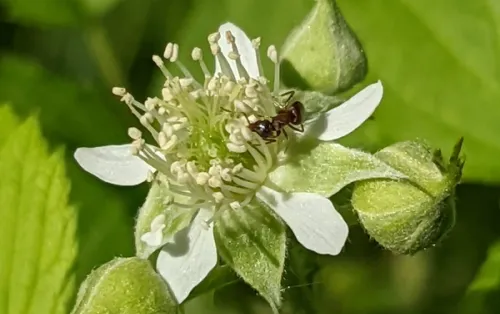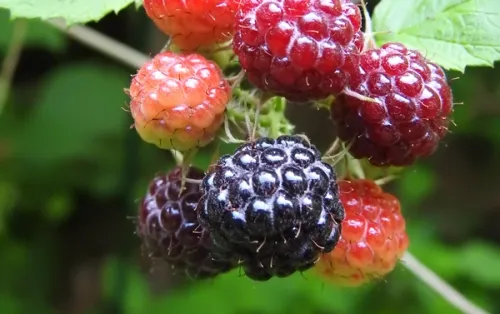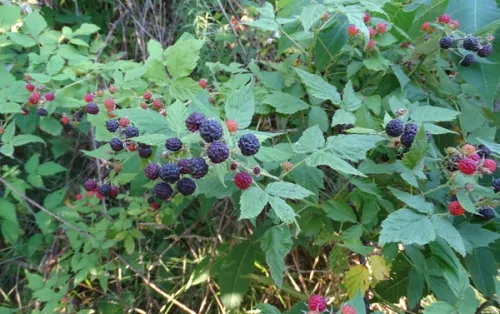Black Raspberry
Black Raspberry is highly prized for its sweet and nutritious fruit, which ripens in early to mid-summer. The plant features arching canes that can grow up to 4 to 6 feet long, often requiring support or ample space to sprawl. In spring, it produces clusters of white flowers that attract pollinators, followed by the highly anticipated berries, which are excellent for fresh eating, jams, and desserts (or will be quickly gobbled up by most bird species!). Small Carpenter Bees (Genus Ceratina) and other small native bee species will take up residence in old growth canes if these are trimmed and left to stand. The canes are biennial, with fruit produced on second-year wood. Black raspberry prefers full sun to partial shade and well-drained, fertile soil. It is a great addition to wildlife gardens, as the berries attract birds and the dense canes provide shelter.
Details
Range Map
Ecological Benefits
Maintenance Tips
- Water regularly during the growing season, especially when fruit is forming, to ensure plump, juicy berries.
- Prune canes back after fruiting to promote new growth for the next season. Remove any dead or diseased canes in late winter or early spring. Re-stake these dried canes with pruned ends exposed to support native bee species, which will come to make their tiny nests in the soft pith of the canes.
- Thrives in rich, well-drained soil. Amend with compost annually to maintain soil fertility.
- Apply a thick layer of mulch to conserve moisture, suppress weeds, and protect roots in winter.
- Monitor for pests such as spider mites and raspberry beetles, and diseases like rust and powdery mildew.







